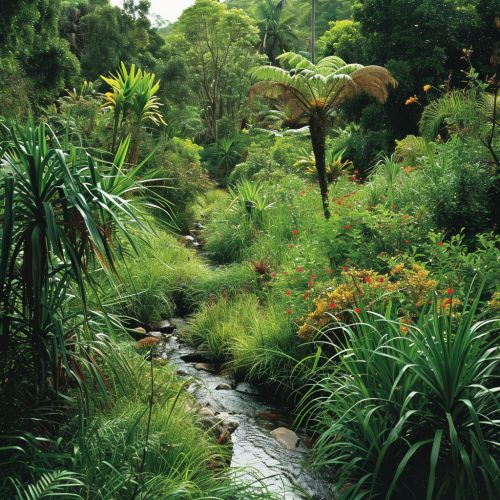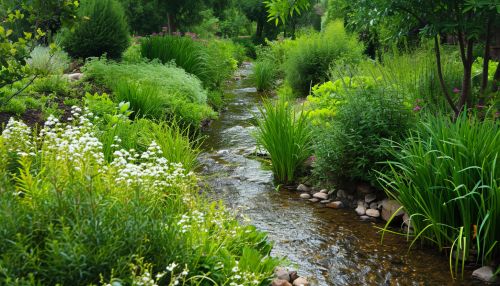Riparian Zones
Introduction
A Riparian Zone is a complex and dynamic ecosystem that lies between terrestrial and aquatic environments. This transitional area, also known as a riparian buffer, is characterized by unique soil, flora, and fauna, which are highly influenced by the presence of water. Riparian zones are critical for water quality, the stability of stream banks and aquatic habitats, and biodiversity.


Characteristics
Riparian zones are distinguished by their unique hydrological properties. They are typically subject to periodic flooding, which shapes their physical characteristics and biological communities. The soil in these zones is often highly fertile and rich in organic matter, due to the deposition of sediment during floods. This, in turn, supports a high diversity of plant and animal life.
Flora and Fauna
The flora of riparian zones is often distinct from the surrounding terrestrial environment, with species adapted to wet conditions. These include various types of willows, alders, and cottonwoods. The vegetation plays a crucial role in stabilizing the banks, filtering runoff, providing shade that cools the water, and supplying food and habitat for a wide range of fauna.
The fauna of riparian zones is equally diverse, with many species relying on these habitats for survival. This includes a variety of amphibians, reptiles, birds, mammals, and invertebrates. Aquatic species, such as fish and macroinvertebrates, also benefit from the habitat complexity and food resources provided by riparian zones.
Functions and Ecological Importance
Riparian zones perform a number of critical ecological functions. They serve as buffers, filtering out pollutants from runoff before it reaches the water body. This includes nutrients, sediment, and other potential contaminants. They also stabilize stream banks and shorelines, reducing erosion and sedimentation.
In addition, riparian zones provide important habitat and corridors for wildlife, supporting biodiversity. They also play a role in carbon sequestration, helping to mitigate climate change.
Threats and Conservation
Despite their ecological importance, riparian zones are among the most threatened ecosystems worldwide. They are often degraded by human activities such as agriculture, urban development, and logging. This can lead to loss of vegetation, changes in hydrology, increased pollution, and declines in biodiversity.
Conservation of riparian zones is therefore a key environmental priority. This involves protecting existing riparian habitats, restoring degraded areas, and promoting sustainable land use practices.
